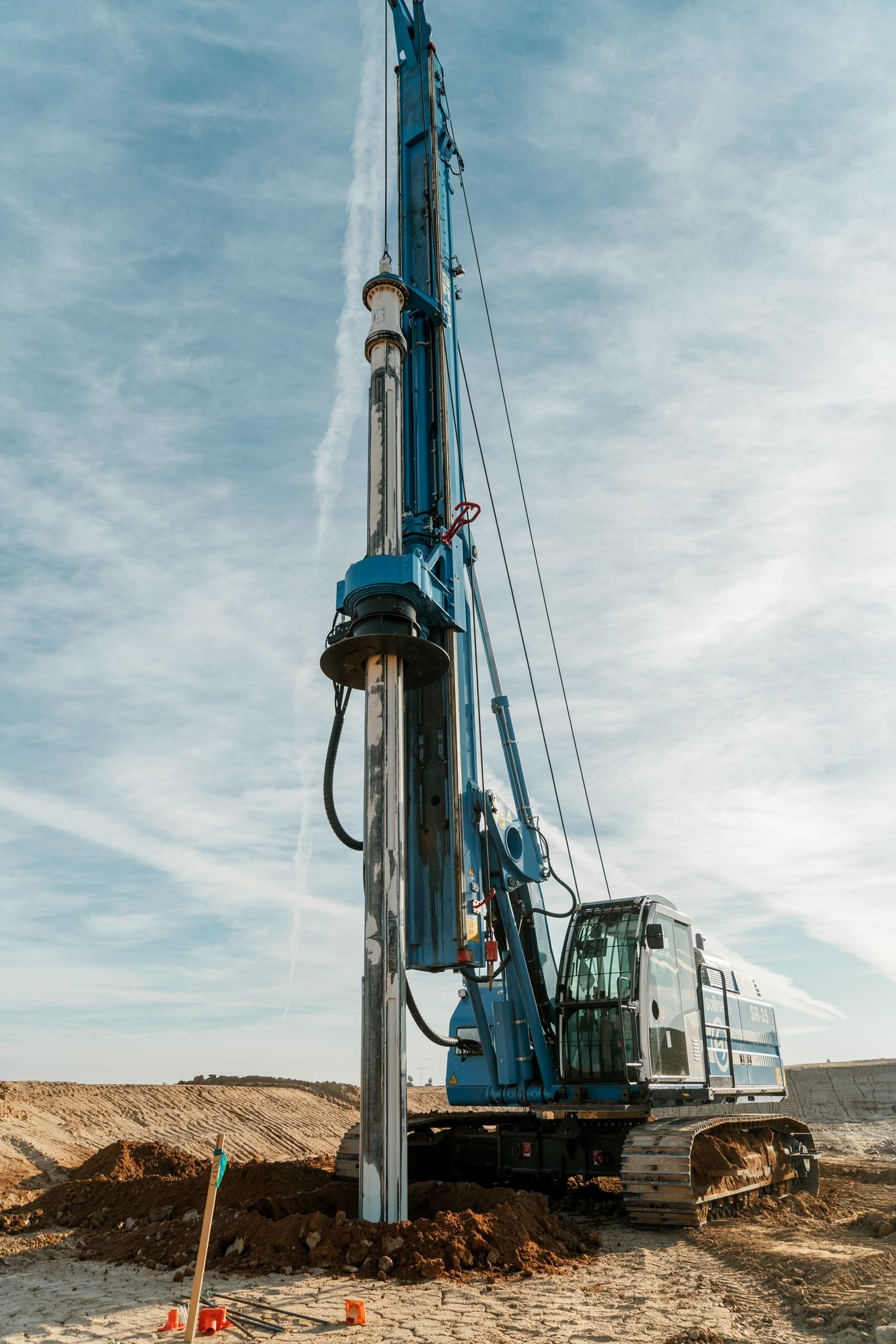The Role of Drill Rigs in Drywell Construction: A Deep Dive
When it comes to constructing a drywell, the first and most critical step is drilling the hole. This process sets the foundation for an effective stormwater infiltration system, ensuring that water is deposited into permeable soils beneath the surface. In regions like the Southwest, where the topsoil consists of hard clays and caliche layers that hinder water infiltration, drill rigs play an essential role in reaching deeper, more permeable strata.
How Drill Rigs Work in Drywell Installation
Drill rigs are specialized machines designed to bore deep into the earth, allowing for precise and efficient excavation. Depending on the project’s needs, these rigs can drill as deep as 120 feet to reach the layers of soil that allow water to percolate. The drilling process involves several key steps:
Site Preparation – Before drilling begins, the area is surveyed and cleared to ensure safe and effective operation. The right location is chosen based on hydrological studies and soil conditions.
Drilling the Borehole – The rig’s drill bit rotates or pounds into the ground, breaking through tough surface layers such as clay and caliche.
Drilling Two Different Sized Holes – The drywell construction begins with drilling a 6-foot diameter chamber, which extends anywhere from 12 to 25 feet into the ground. Once this section is completed, a deeper 4-foot diameter hole is drilled below it, allowing the standpipe to reach depths of up to 120 feet for optimal stormwater infiltration.
Why Drill Rigs Are Essential for Drywells
In the Southwest, heavy monsoons can lead to excessive surface runoff, making stormwater management a challenge. Because the upper soil layers are highly compacted and impermeable, traditional infiltration methods won’t work. Drill rigs solve this problem by:
Reaching Permeable Soil Layers – By penetrating deep into the earth, they allow stormwater to bypass impermeable surfaces and infiltrate more effectively.
Enhancing Stormwater Management – Properly installed drywells help prevent flooding and reduce strain on surface drainage systems.
Supporting Sustainable Water Practices – Instead of directing stormwater into waterways, drywells recharge groundwater, aligning with conservation efforts.
Conclusion
Drill rigs are the unsung heroes of drywell construction, providing the necessary access to deep, permeable soil layers for efficient stormwater infiltration. Without them, managing stormwater in regions with hard clay and caliche-laden soils would be nearly impossible. By utilizing advanced drilling techniques, we ensure that drywells function optimally, contributing to sustainable water management in the Southwest and beyond.




